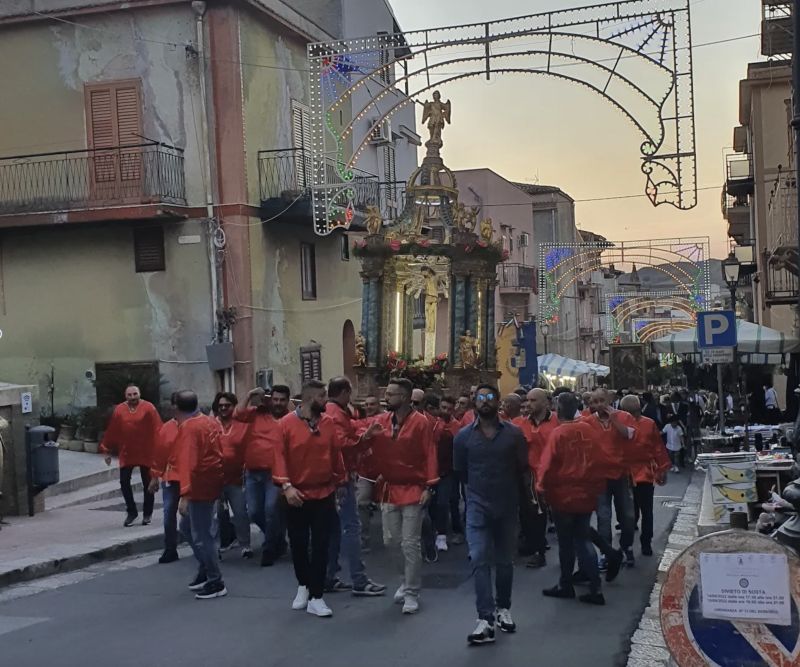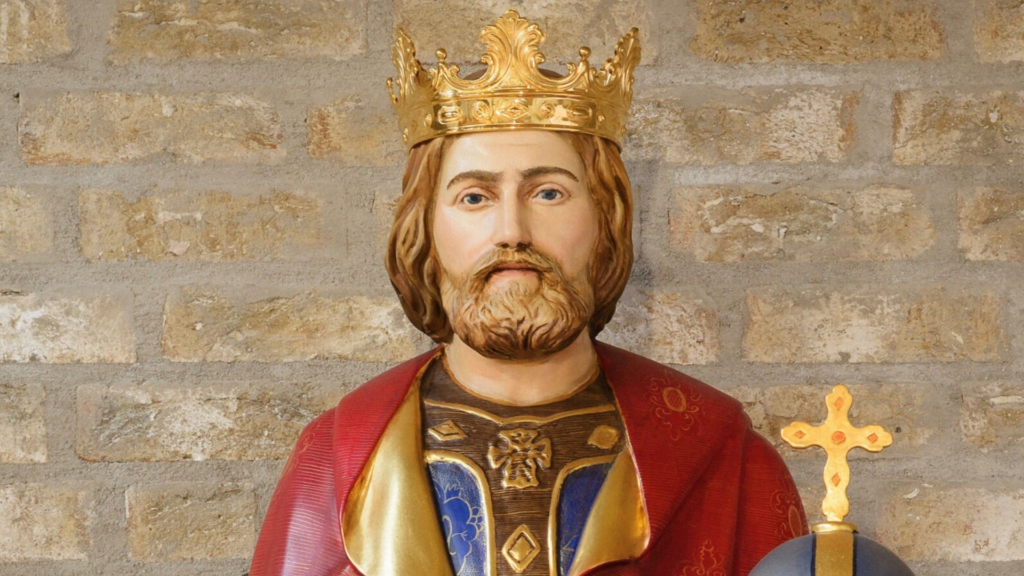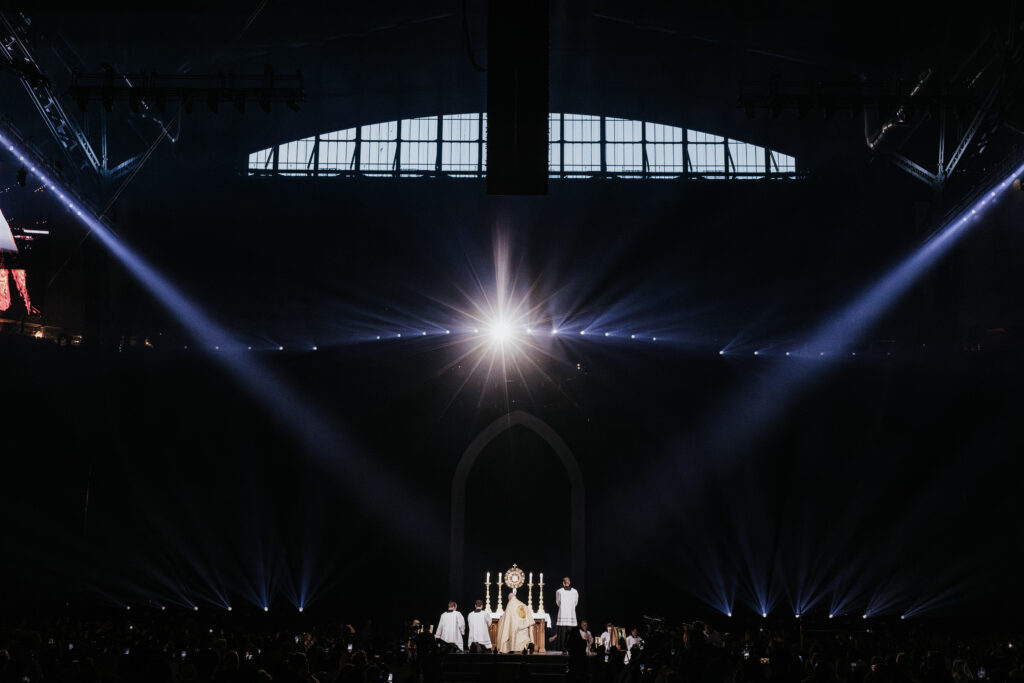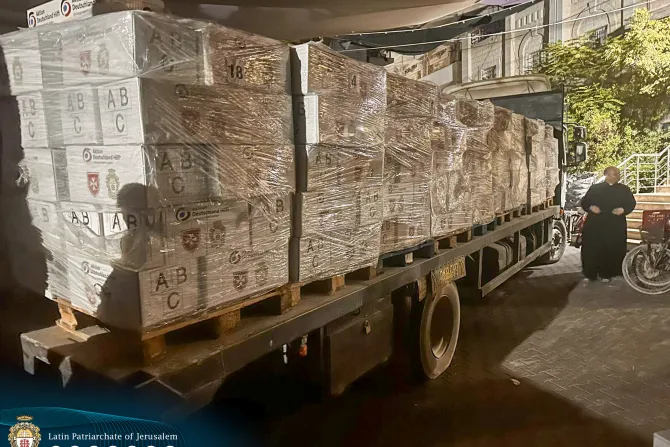Rome Newsroom, Sep 14, 2023 / 02:30 am (CNA).
In northern Sicily, 15 miles from the sea and nestled in the foothills of the Madonie mountain range, lies the town of Montemaggiore Belsito.
Though the town’s population, once mostly farmers, has declined to under 3,000, it boasts no fewer than 11 churches — a sign of the vibrant Catholic belief at the time of its formal establishment in 1610.
And while many of these old churches stay closed up, there is one important feast day that draws many of Montemaggiore’s former residents home: the feast of the Exaltation of the Holy Cross on Sept. 14.
A 15th- or 16th-century wooden cross is kept in the Church of the Holy Cross in Montemaggiore Belsito on the Italian island of Sicily, except when it is moved to the Basilica of St. Agatha for the religious celebrations of the Sept. 14 feast of the Exaltation of the Holy Cross. Credit: Riccardo Siragusa
Across hundreds of years of celebration, the Holy Cross has become the de facto patron of the town, even though the official saint is St. Agatha, who is honored in the name of Montemaggiore’s mother church and basilica.
The town marks the day of the Exaltation of the Holy Cross with Mass and a solemn procession through the town with a late 15th-century or early 16th-century cross of uncertain origin.
Lift high the cross, the love of Christ proclaim, till all the world adore his sacred Name. pic.twitter.com/8DTEKdn9Ti
— Hannah Brockhaus (@HannahBrockhaus) September 14, 2022
The cross and corpus are made of cypress wood from the Madonie mountains. It is believed the silver leafing on the cross is not original but was added sometime in the 1700s.
The feast day procession, which begins and ends at the Basilica of St. Agatha, passes through the main streets of the town; it is considered a great honor to be one of the people to transport the heavy float in which the cross is carried.
Out of the whole year, “it’s the feast day with the highest participation in the area and in the whole diocese,” Father Salvatore Panzarella, the pastor of the Basilica of St. Agatha, told CNA.
The procession for the Exaltation of the Holy Cross winds through the main streets of Montemaggiore Belsito. Credit: Hannah Brockhaus/CNA
He explained that the celebration begins the Sunday before Sept. 11, when the crucifix is moved from the Church of the Holy Cross to the Basilica of St. Agatha.
Three days of preparation then follow Sept. 11–13. These three days recall a time in 1836 when the people processed the cross through the streets to ask for protection from a cholera outbreak.
At midday on Sept. 15, the cross is brought back to its church.
Not only is devotion to the Most Holy Cross very old in Montemaggiore, but the celebration of its feast day “is probably the oldest in the territory,” Panzarella said.
The procession for the Exaltation of the Holy Cross winds through the main streets of Montemaggiore Belsito. Credit: Hannah Brockhaus/CNA
A popular legend says the cross, which can be dated to between 1480 and 1520, was found by Father Giuseppe Cangelosi and some farmers around the year 1625.
The story says the crucifix was found in a field near an abbey. The priest’s attention was drawn to the spot by a bush that was burning but not consumed by the flames.
Yet Montemaggiore’s councilor of culture and deputy mayor said a more likely explanation is that the cross was a gift from a member of the noble Migliaccio family, which ruled the area for years and was responsible for its founding.
There are no historical records to give proof to the theory, but the idea is supported by the fact that the Migliaccio family paid to have the Church of the Holy Cross built in the early 1600s, according to Riccardo Siragusa, the town’s deputy mayor.
The procession for the Exaltation of the Holy Cross winds through the main streets of Montemaggiore Belsito. Credit: Hannah Brockhaus/CNA
There are also historical records showing that the feast of the Holy Cross was celebrated by the townspeople as early as 1628.
Siragusa and pastor Panzarella both explained that the town’s first celebration of the cross was marked every year on May 3 — the date sometimes known as “Roodmas” — which commemorates the finding of the true cross in the Holy Land.
Around the middle of the 1700s, the pastor said, Montemaggiore began to also mark the Sept. 14 feast day of the Exaltation of the Holy Cross (Pope John XXIII removed the May 3 feast from the Church calendar in 1960 in favor of Sept. 14).
The May 3 feast is also commemorated with Mass and a procession, this time along a longer and steeper path through the town’s outskirts so the parish priest can bless locals’ fields and animals.
Centuries later, Montemaggiore continues to mark both days with religious celebrations, though Sept. 14 has taken on much more importance.
“There are very deep connections to this festivity,” Panzarella said.




